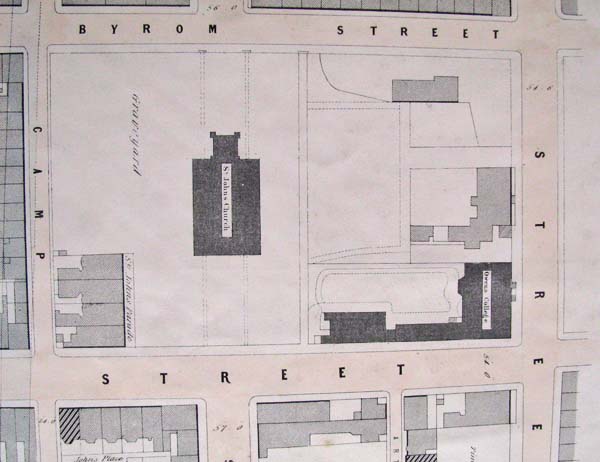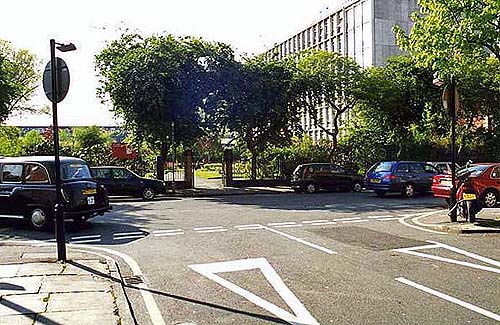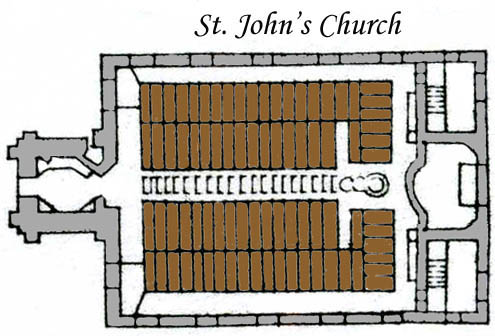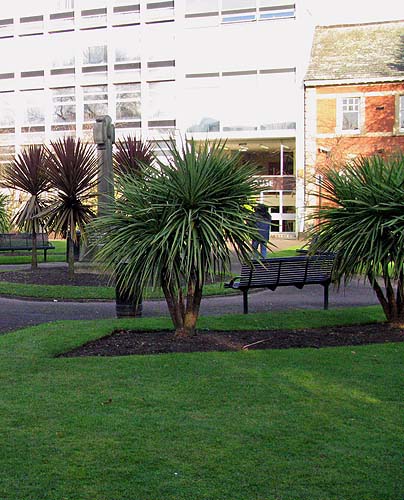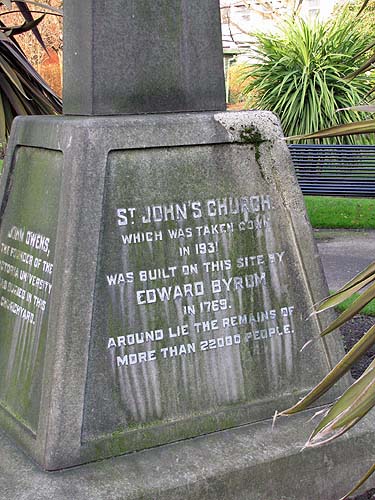|
St. John's
Church
The photograph below shows St. John's Gardens, the only park within the city centre. What is missing from the picture is St. John's Church which was commissioned by John Byrom in 1769 and demolished in 1931. Today's gardens stand on the site of that church. 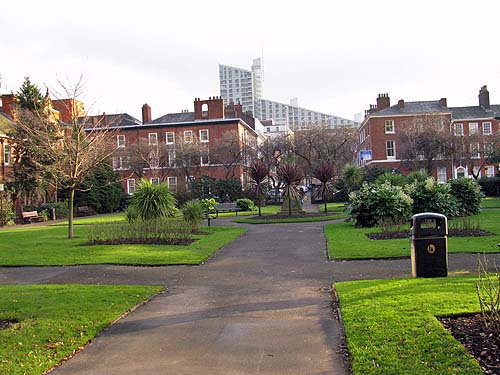 Above you see the
entrance to the park from John Street. The gateway
is the original gate to the church. You can
see the church in the photograph below (shown with
the permission of the Manchester Archives and Local
Studies Department).
Today a stone cross
stands in the gardens to commemorate the church. The
plaque at the base of the cross says that the
remains of 22,000 lie buried in this area.
The claim of so
many people being buried here is hard to
comprehend but if you click on the link below you
can see an image of the churchyard. The
whole yard is paved with a carpet of
tombstones. Even so one has to think that
the bodies were buried one upon the other.
St.
John's Churchyard
Among those
buried here is John Owens, founder of Owens'
College which became Manchester University.
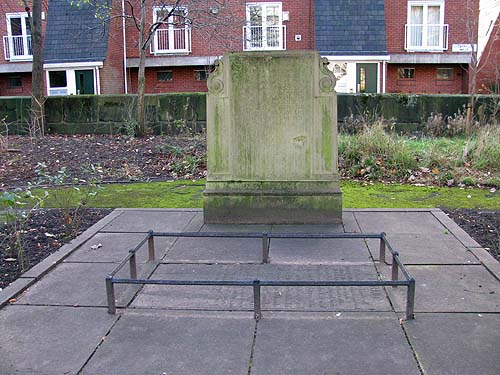 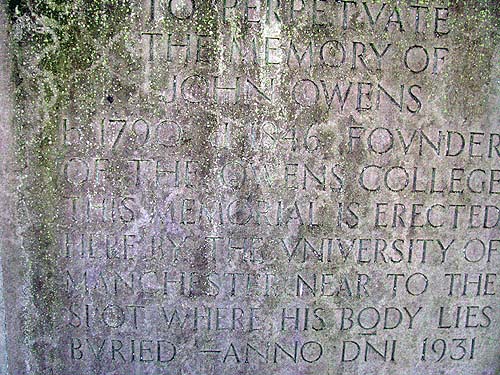 Also buried here is William Marsden who was famous for introducing the concept of a half-day holiday on Saturdays. The idea that workers would stop work at noon on Saturdays must have been revolutionary in his day and probably welcomed by the workers. It seems particularly odd in the context of today's working week when many shops are open 7 days a week and in some cases 365 days a year. 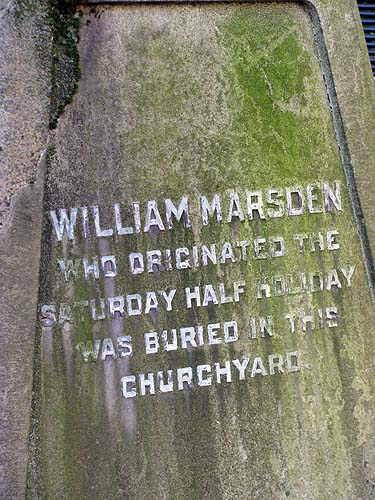 |
Close Window
